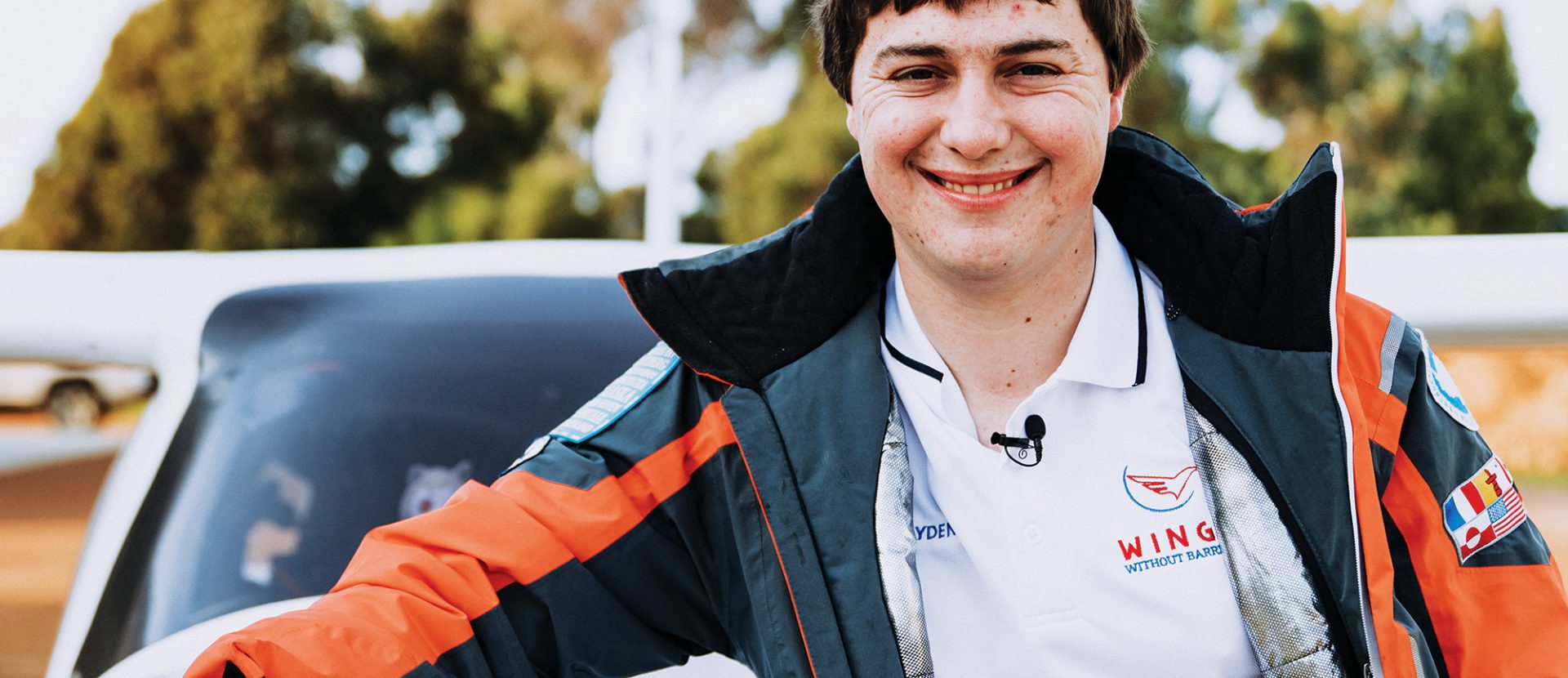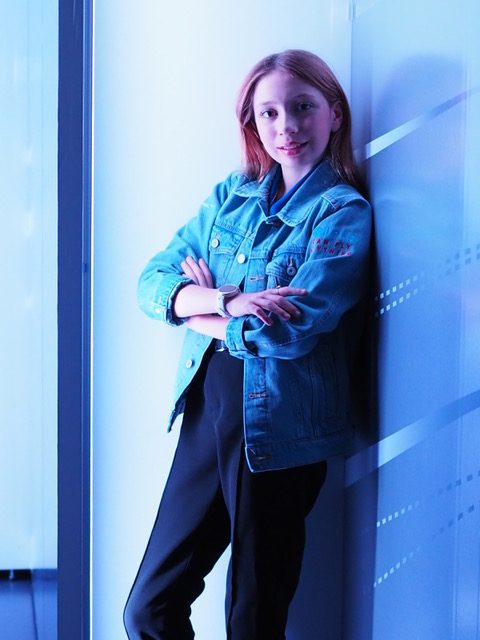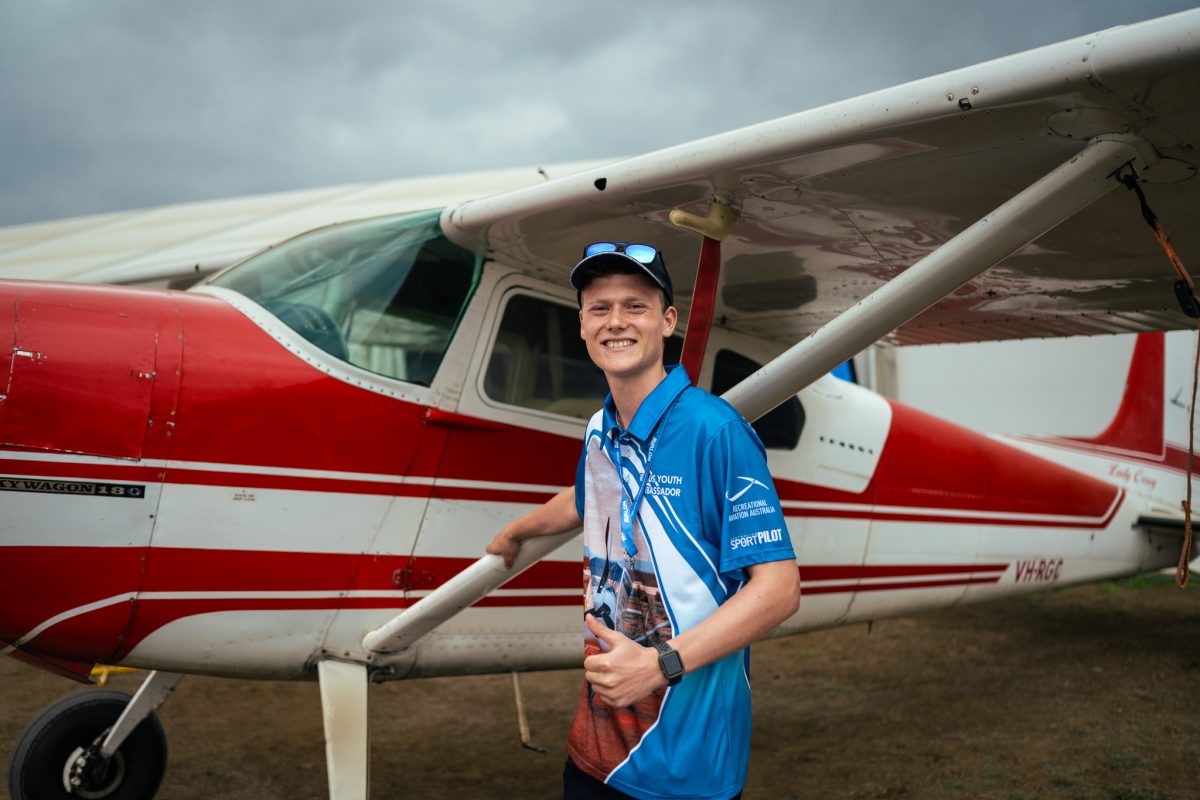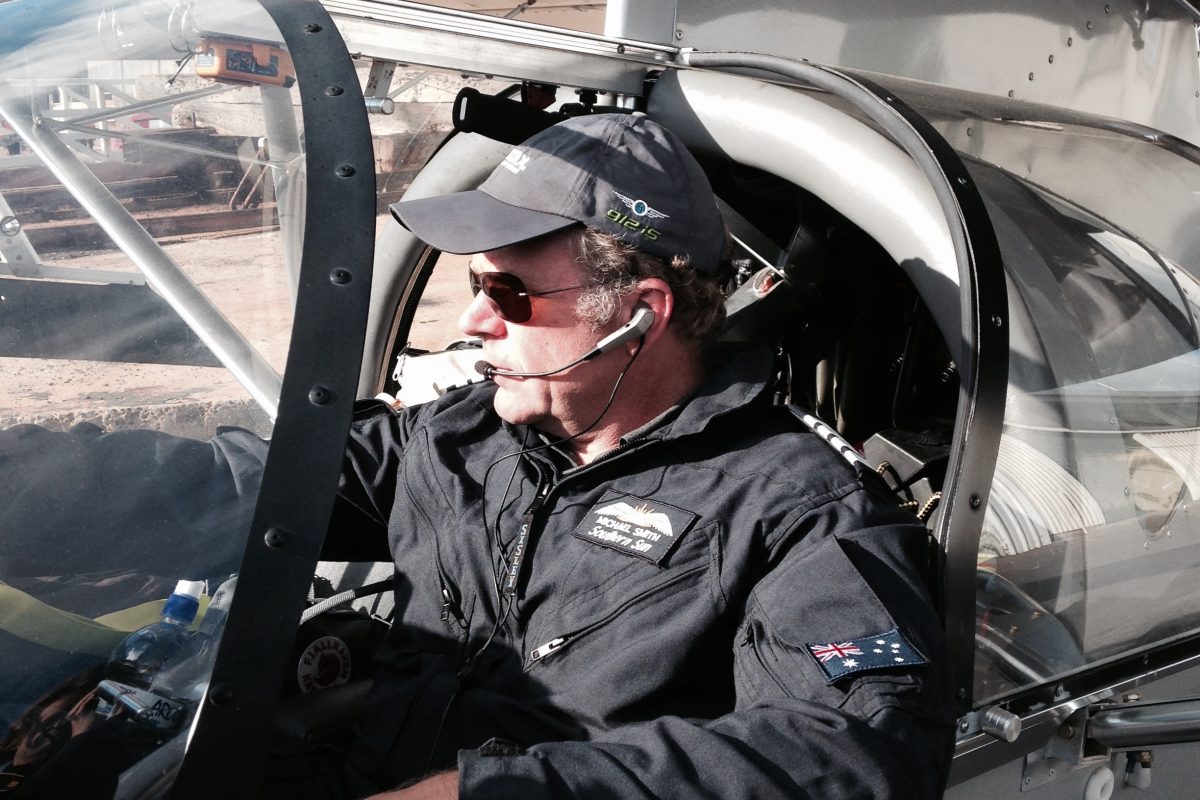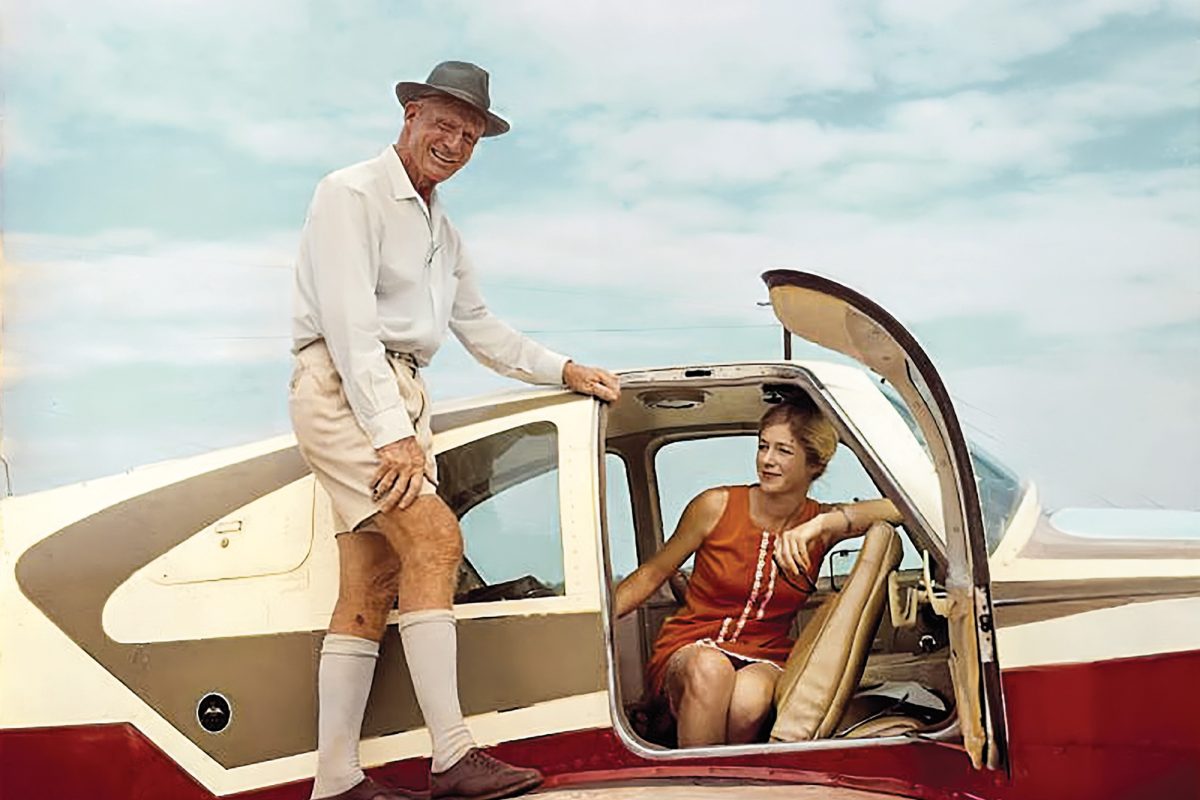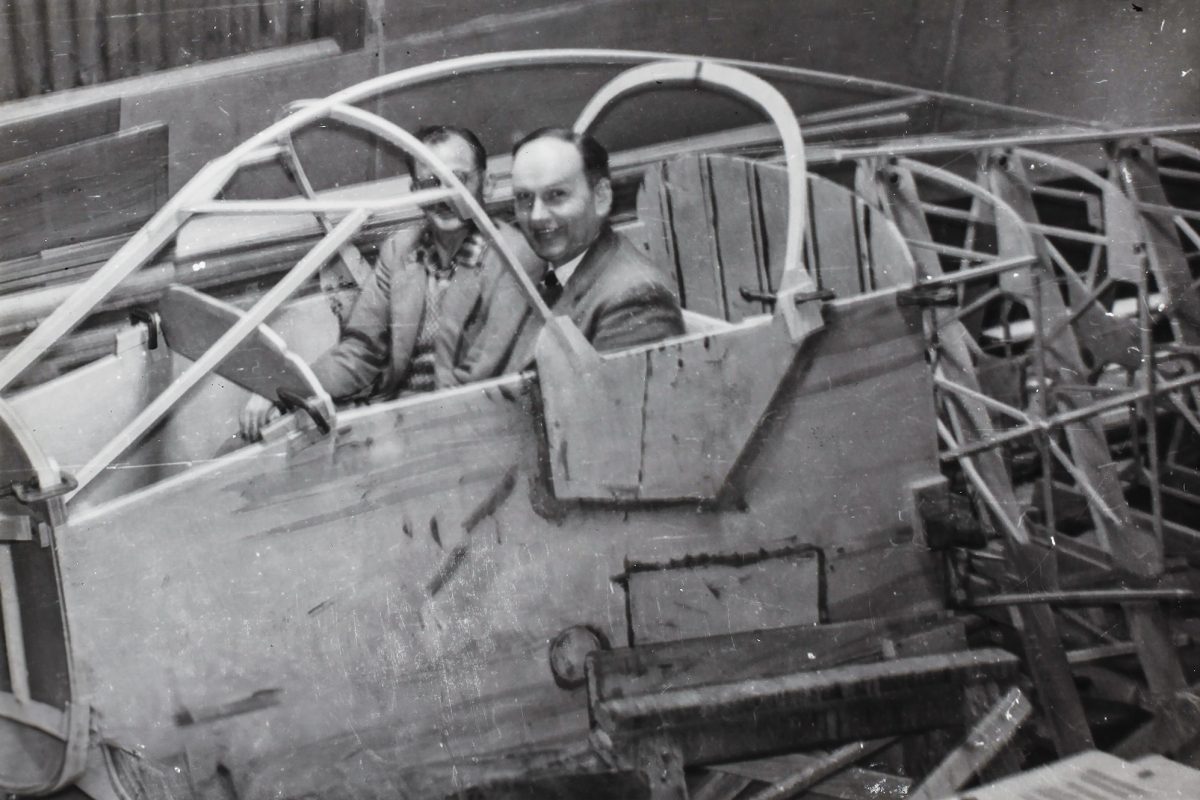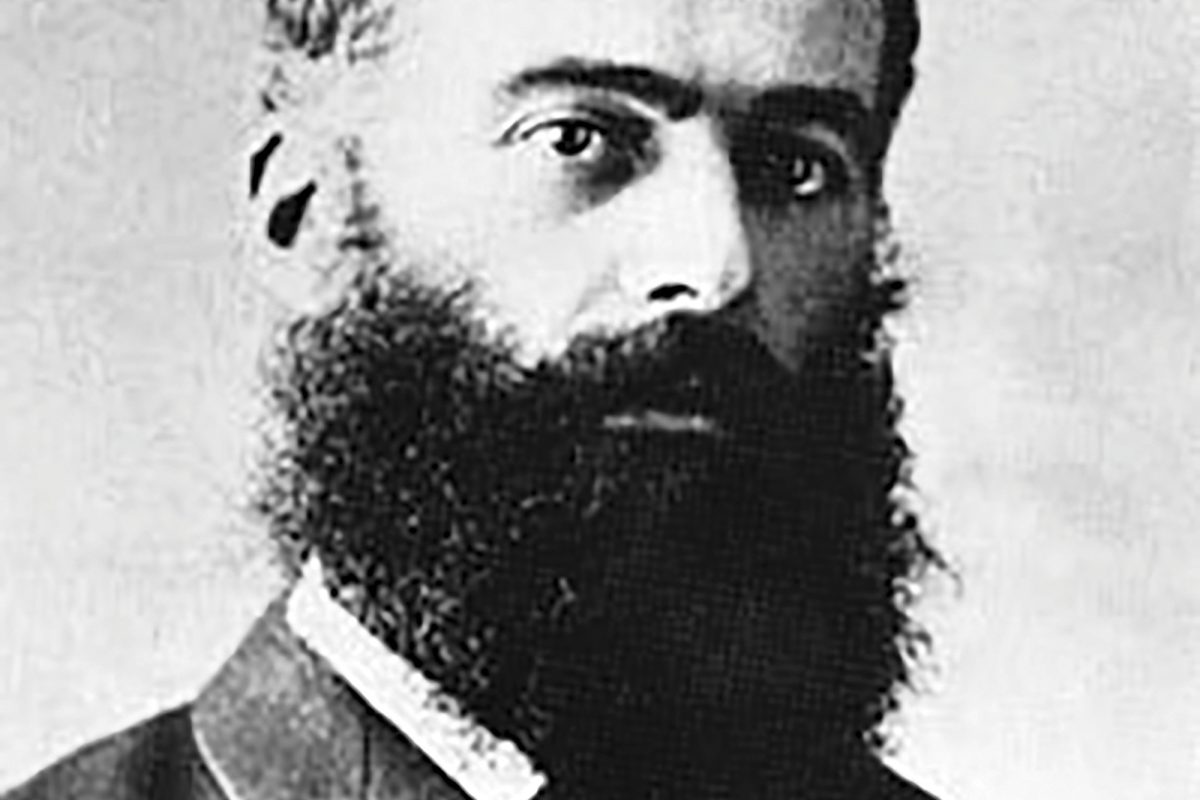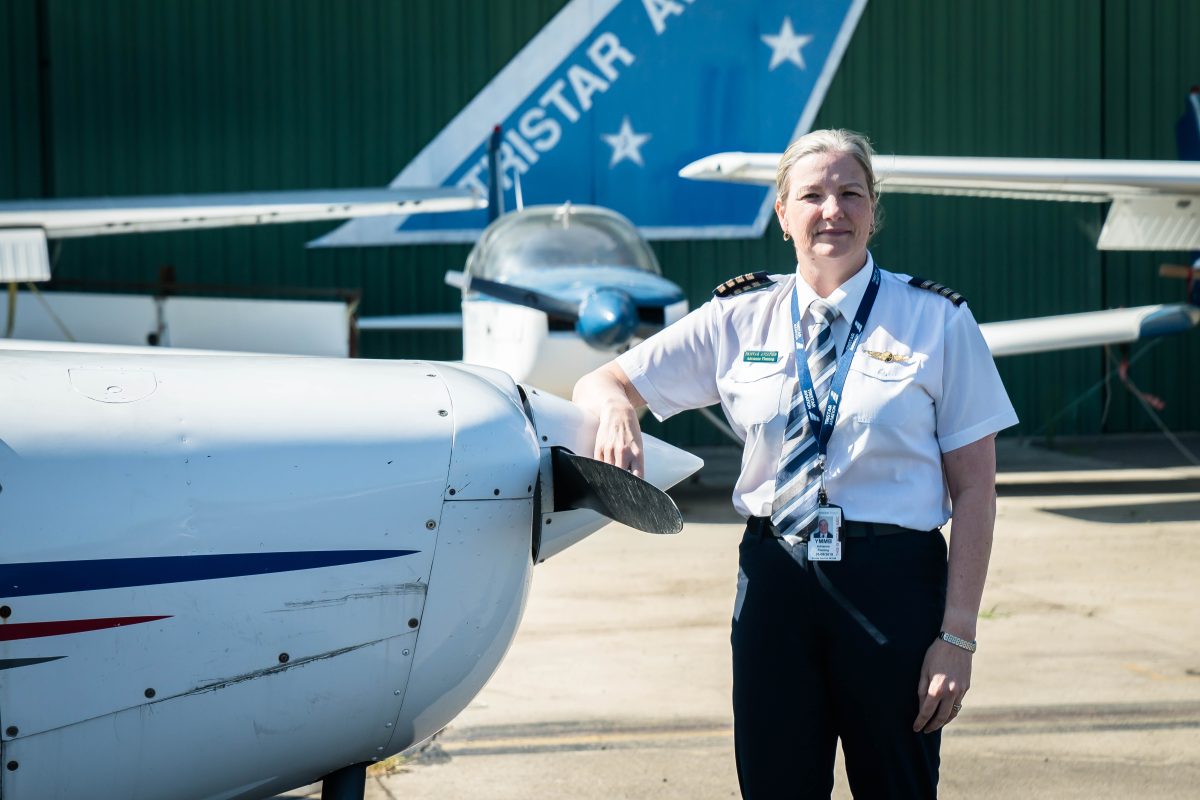A LAP AROUND AUSTRALIA WITH HAYDEN McDONALD
This is a story about a young man who does not see himself as special or different and wants acceptance and understanding, rather than awareness. He is a young man attempting to fly around Australia, stopping along the way to talk to community groups and schools about the fact that with the right attitude and support, there should be no barriers to what we can all achieve in life.
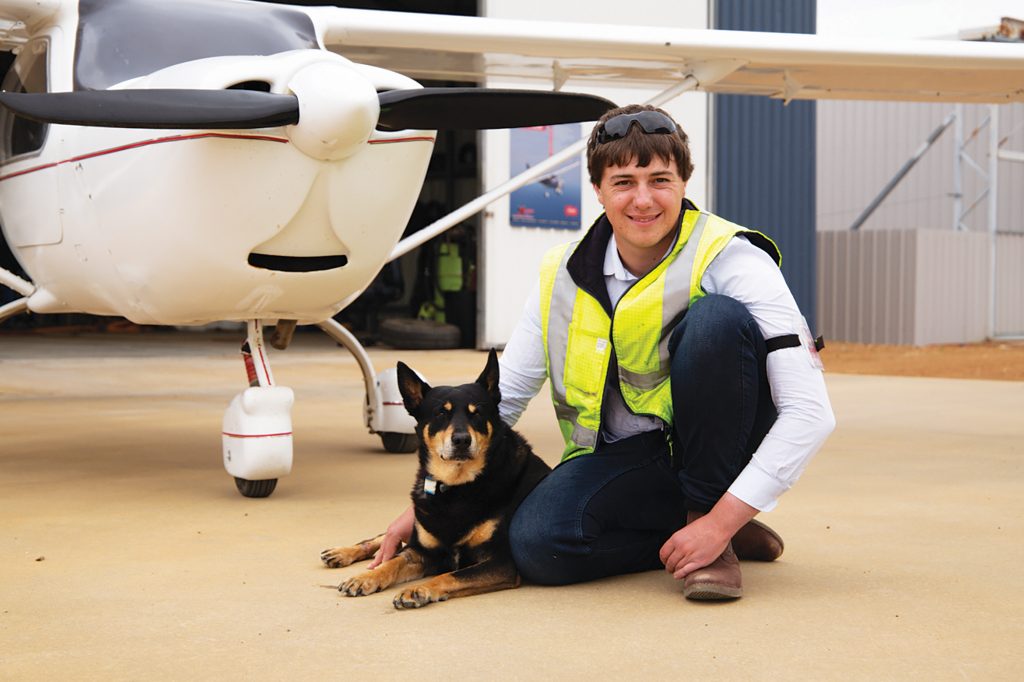
Hayden McDonald started his social media platform Wings Without Barriers to lobby for acceptance and change. He wanted to show young people that no matter what challenges they face in life, they can overcome them. Wings Without Barriers combines Hayden’s passions for both aviation and promoting real inclusion for people on the autism spectrum.
But Hayden’s social media platforms are not just about selfies and inspirational quotes. At just 22 years old, Hayden is determined to make a difference by proving that autism is not a one-size-fits-all diagnosis. Hayden says “people with autism don’t want to be cured, they just want to be accepted”. He has a mantra that if there are no opportunities available to you, you have to make your own.
We caught up with Hayden in Bundaberg on his way flying solo around Australia, having left his home in Esperance, WA on September 8th in his Jabiru J120 (Callsign: Jabiru 7315). Hayden was inspired by his grandfather to learn to fly when he was just 15 years old. He met Jabiru 7315 when he was about to turn 16 and says she was “a lot of [his] firsts.”
“She was my first take-off and landing, my first solo in the circuit and into the training area, and my first flight with my RPC”. Hayden passed his initial flight training with her, and has continued to fly with Jabiru 7315 ever since.
Hayden successfully got his RPC at 17 years old, with a dream to pursue a career in aviation. When he started the medical process to apply for commercial training however, he received an email from CASA stating that his application had been denied on medical grounds. This was because Hayden was “on the spectrum”, which apparently created an unacceptable risk for aeronautical navigation. Hayden is out to prove that it is not acceptable to have a blanket rule that ostracises every autistic pilot in Australia. He is frustrated by what seems to be few mechanisms for seeing the person behind the paperwork.
Back to Jabiru 7315. Being a flight training aircraft, she has had a hard life. She had endured countless hard landings and been thrown about by student pilots. She had crashed twice in three years doing simulated engine failure after take-off and she was so battered and bruised, she ended up in a shipping container in Bundaberg. She was rebuilt firstly by Jabiru and then by a local L2 maintainer, who kindly offered her to Hayden at half price. Hayden’s mum and his grandfather bought her for Hayden on the condition he pay for the maintenance and costs himself.
Hayden says he sees her story as his story, and he is now pushing himself and 7315, as he refers to her, to their limits by flying around Australia. Haydensays aircraft ownership is like a marriage – there are good times and bad times, but having the ability to fly anywhere together is worth it. Hayden is a big believer in speaking about your ability, not your disability. He set out to travel around the country, visiting 28 towns, covering more than 8000 nautical miles and over 80 hours of flying.
Hayden tells me that one of his favourite landings was at Glenroy Station, his grandparents’ sheep station in Orroroo, SA. It has been his dream to land there since he started flying. Taking off with only a 700m runway was challenging, especially as it was 30 degrees and the density altitude was 2000ft. His next stop was Broken Hill to check out the Royal Flying Doctor Service Visitor Centre, then down to Victoria via Mildura for a flying visit to Tocumwal.
From here, Hayden journeyed onto Parkes for a tour of the Historic Aircraft Restoration Museum, a speaking engagement, and a catch up with some of the RAAus team. Then it was onto Warnervale on the outskirts of Sydney. It was a turbulent day that took Hayden close to restricted airspace. He made it as planned, but due to the weather, ended up staying in Sydney for a few days. It was then meant to be on to Dubbo, but the forecast was for a 20-knot crosswind, severe turbulence and a landing temperature of 36 degrees, well beyond 7315’s capabilities. Hayden made the tough decision to skip Dubbo and only stop in at Moree to refuel.
Hayden noticed on his last few legs that the oil pressure had been jumping around and on checking the plane while refuelling in Moree, found a crack in the speed fairing which meant increased drag around the landing gear. Another call to Jabiru to check if he was safe to fly, which he was, and Hayden landed in Dalby, QLD for the night.
Hayden says his flight from Dalby to Bundaberg was rough and took him close to controlled airspace, but 7315 landed safely and was now on her home turf and ready for a checkup.
In Bundaberg, Hayden again visited the Royal Flying Doctor Service which made him even more determined to become a pilot with the RFDS. He wants his passion for flying to be for a purpose and to make a difference – not just be something he does for fun.
With 7315 having received some TLC in Bundaberg with Jabiru, the next stop was Longreach — Hayden’s longest leg at just over six hours flying in a day. He made the sensible decision to stay an extra day in Longreach as he was exhausted, which gave him time to look at the Qantas Founders Museum, where he also spoke to a small crowd.
On to Mount Isa, which was busier than Hayden expected. A QantasLink flight has just departed and another was in the circuit, so Hayden joined the circuit for 34 which is right-handed, but he did it on the lefthand circuit. He says this mistake “messed up the traffic flow for the other two aircraft on a long final” which he apologised for. Thankfully things worked out okay and Hayden, always eager to learn and improve, asked what he could have done better.
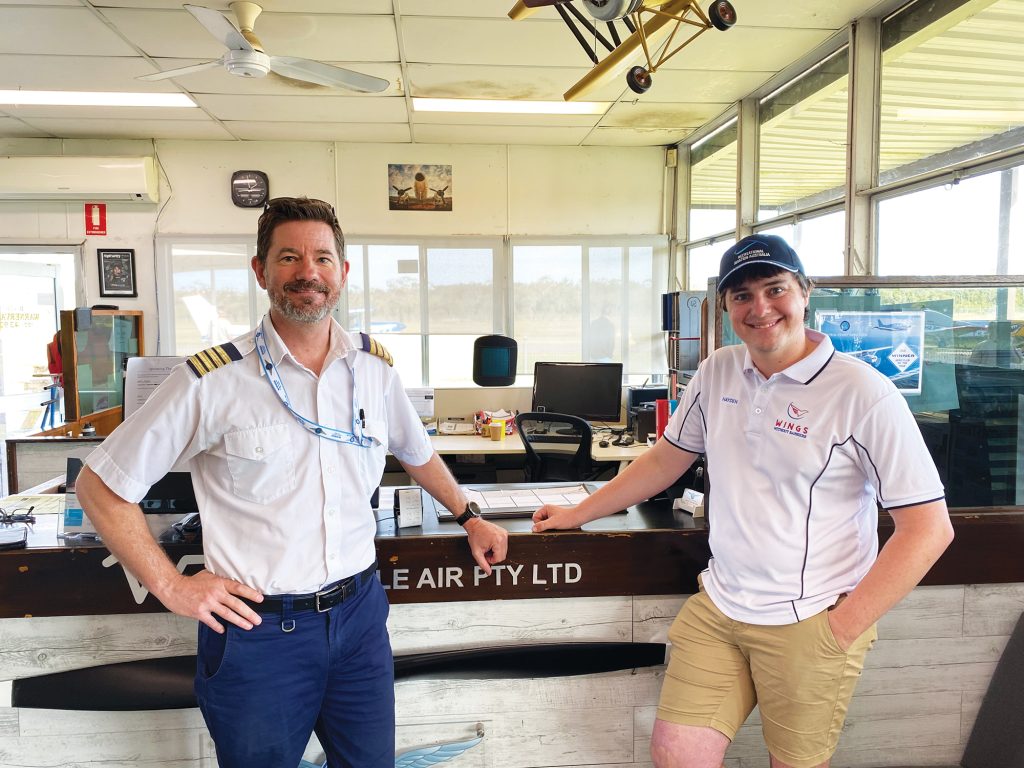
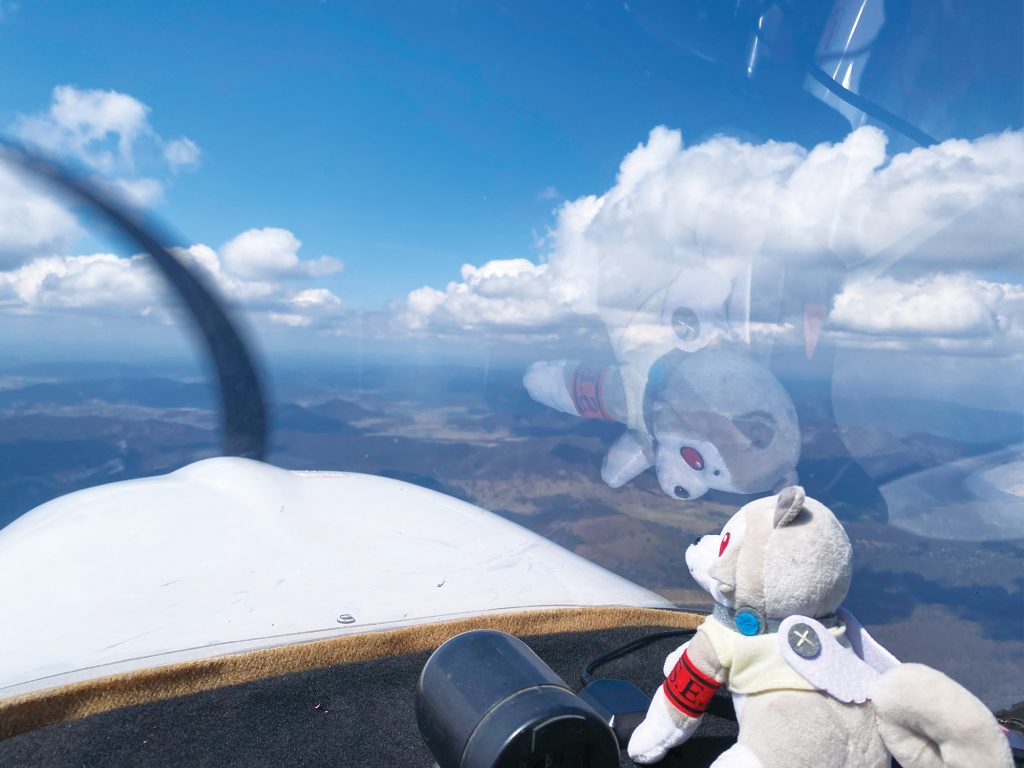
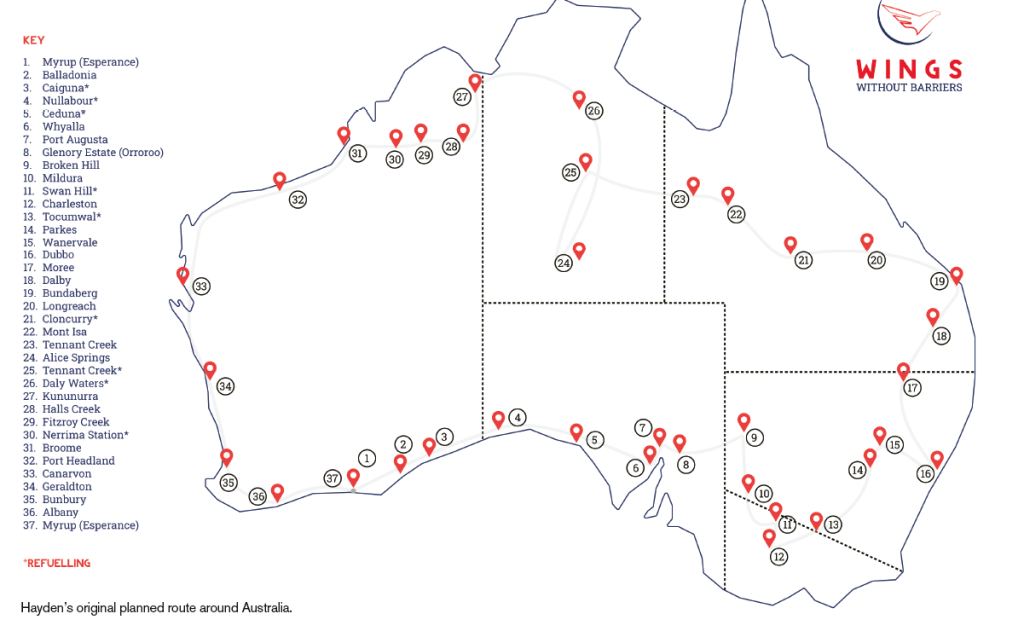
A good lesson for all pilots. As Hayden correctly points out “gaining your RPC does not mean you stop learning – you gain it to learn further”.
Hayden then made it to Kununurra but unfortunately had his dreams put on hold due to the bushfires across Western Australia and the Kimberley in late October. He had clearance to leave Kununurra and checked visibility, but he wasn’t confident. Visibility was 10km but after take-off Hayden realised that it was much worse than expected and made the tough, but sensible decision to turn around and return to Kununurra.
The pilot’s mantra of “take offs are optional – landings are mandatory” was obviously playing loudly in Hayden’s head. You can always take off and change your mind if you are feeling uncomfortable, which is exactly what Hayden did.
After returning to Kununurra and waiting for eight days, regularly assessing the smoke situation, Hayden made the difficult decision to put his flight on hold as he deemed it not safe to fly. Hayden reluctantly returned to Esperance at the end of October after making arrangements for his beloved 7315 to stay in Kununurra. Hayden returned to Kununurra in late- November with his sights now on his return voyage to Myrup.
Interestingly, when we spoke to Hayden, he commented that none of the groups he had spoken to in his travels were particularly interested in his autism – they just wanted to hear about his flying. It seems that his point is being made, valuable lessons have been learnt and Hayden is receiving the acceptance and understanding he is seeking.
Hayden is well on the way to achieving his dreams and we hope that we will be writing about the final legs of Hayden’s journey in our next edition.
